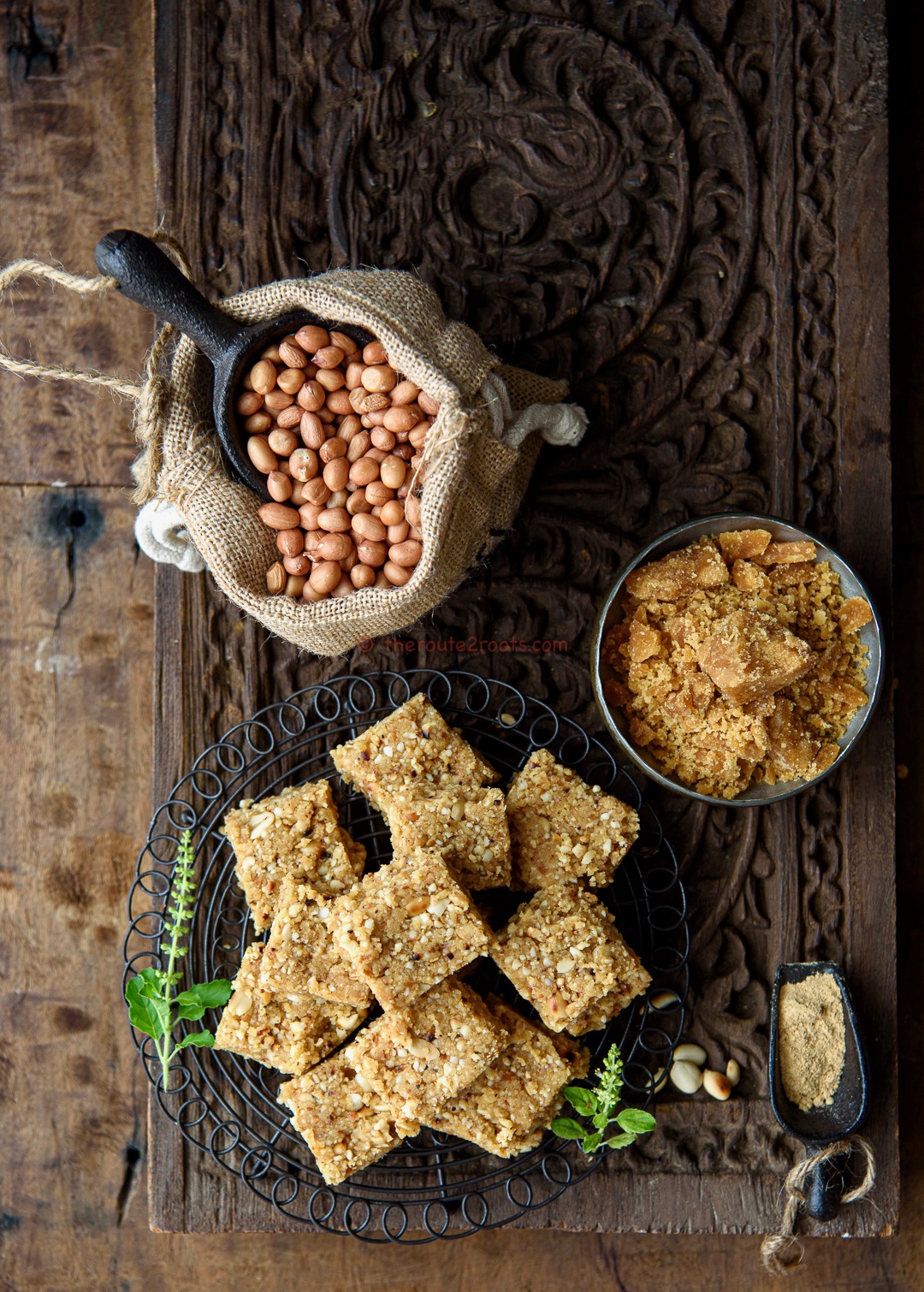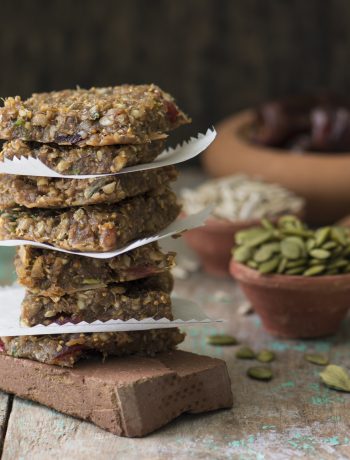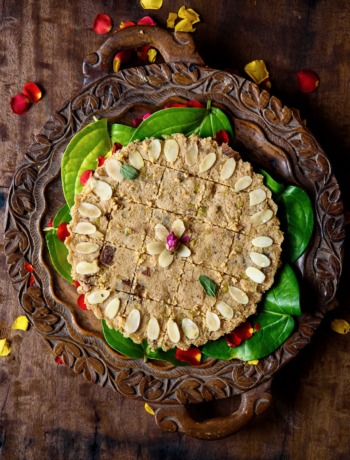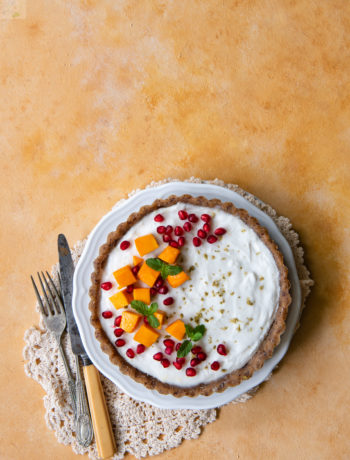For a very long time, I had believed that the Shing Pāk (Groundnut fudge) was also referred as Mandvi Pāk because it might have originated from Mandvi, a popular coastal city of Kutch, Gujarat. This was until my father corrected me, “Shing is also called Mandvi in Kathiyawar/Saurashtra 🤦🏽♀️” he mentions as we discuss Mandvi Pāk. Shing or groundnut described as Bhoy Shing/Ground-Nut in Vishwakosh/Gujarati dictionary are revered in Gujarati cuisine. It is also called Kathiyawar ni Badam/ Almonds of Saurashtra. They find a place in a lot of our foods but the crowning glory is the ground-nut oil. It is THE oil that best brings out the flavours of our cuisine. We go nuts over the use of groundnut oil in our everyday cooking, especially in farsans.
As Shwetal mentions in the previous post on the role of Prasad during community Garba, the Prasad was kind of an energy shot, just a fistful and we were good to go for 3-4 hours of intense dancing. Shing-Sakaria (peanuts and sugar pearls) and Shing – Revdi (peanuts and sesame candies) remained a favourite offering at the Garba events, as kids we would launch for a fistful of it directly from the plate. The Shing Pāk or Mandvi Pāk is a fudge or slice made with coarsely ground roasted groundnuts, ghee and sugar or jaggery. Featured here is Shing Pāk made with jaggery instead of sugar. Since I love to bite into roasted peanuts, I have kept the grind coarse. Families with elderly and children prefer to grind the peanuts to a finer texture. An extremely easy recipe to put together, Mandvi Pāk is also a winter warming food for us.

Mandvi Pāk
Ingredients
- 2 cups raw peanuts/groundnuts, roasted and skinned
- 1 cup jaggery, shredded
- 1/2 cup ghee, melted
- 1/2 teaspoon sooth/dried ginger powder
Instructions
In a thick bottom pan, on a very gentle flame roast the raw peanuts well. It will take 15-20 minutes to roast them evenly.
Cool and rub the skin off.
Grease a thali or a 9 inch square pan with ghee to transfer the cooked Mandvi Pāk.
Grind the roasted peanuts to a desired texture. A coarse texture is the best.
Take a heavy bottom kadai/wok.
Place it over gentle flame.
Add the ghee.
Once the ghee warms up, add the shredded jaggery.
The jaggery will begin to melt gradually.
Remember to stir continuously and keeping the flame low.
As the jaggery melts, it will bloom.
Once the jaggery has completely melted and bloomed so that the ghee and jaggery take a sauce like consistency turn off the flame.
Add the ground-nut powder and sooth.
Mix everything well.
The mixture will come together like a shaggy dough.
Turn on the flame and cook for a minute or two.
Transfer the mixture to the prepared pan and spread evenly with the back of a flat bottomed bowl/katori.
Once the Mandvi Pāk comes to room temperature, slice it in squares.
Allow it to cool and set for 1-2 hours before transferring it to an airtight container.
Notes
Be careful not to over cook the jaggery in the ghee. Turn off the flame once you see the jaggery has melted completely and has bubbles on top. This is called soft payi. If you keep the flame very high it will definitely overcook and make the pāk very become hard.





No Comments